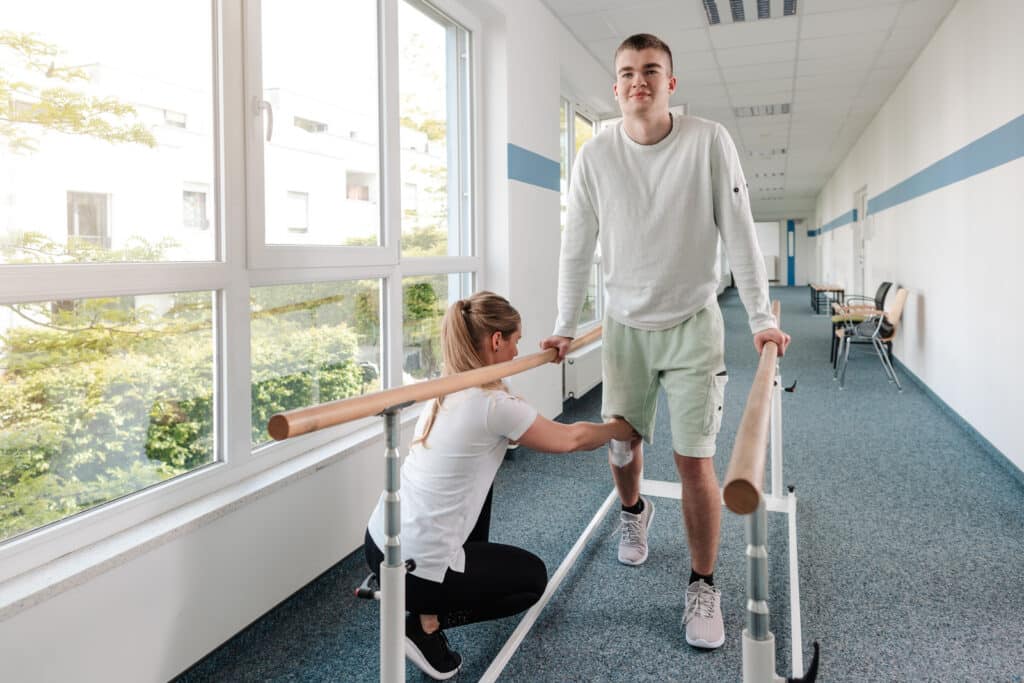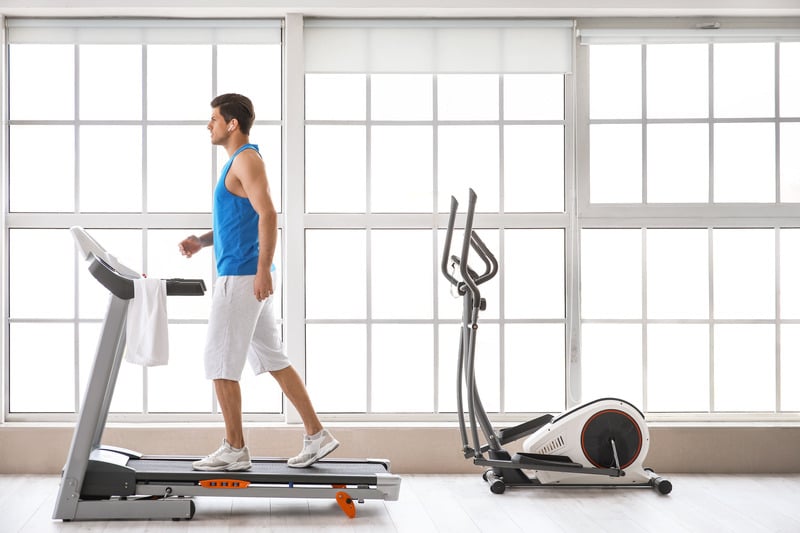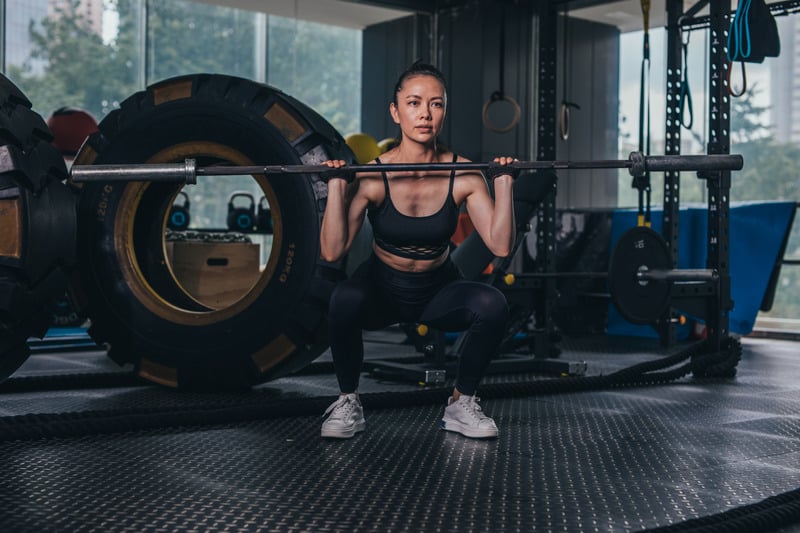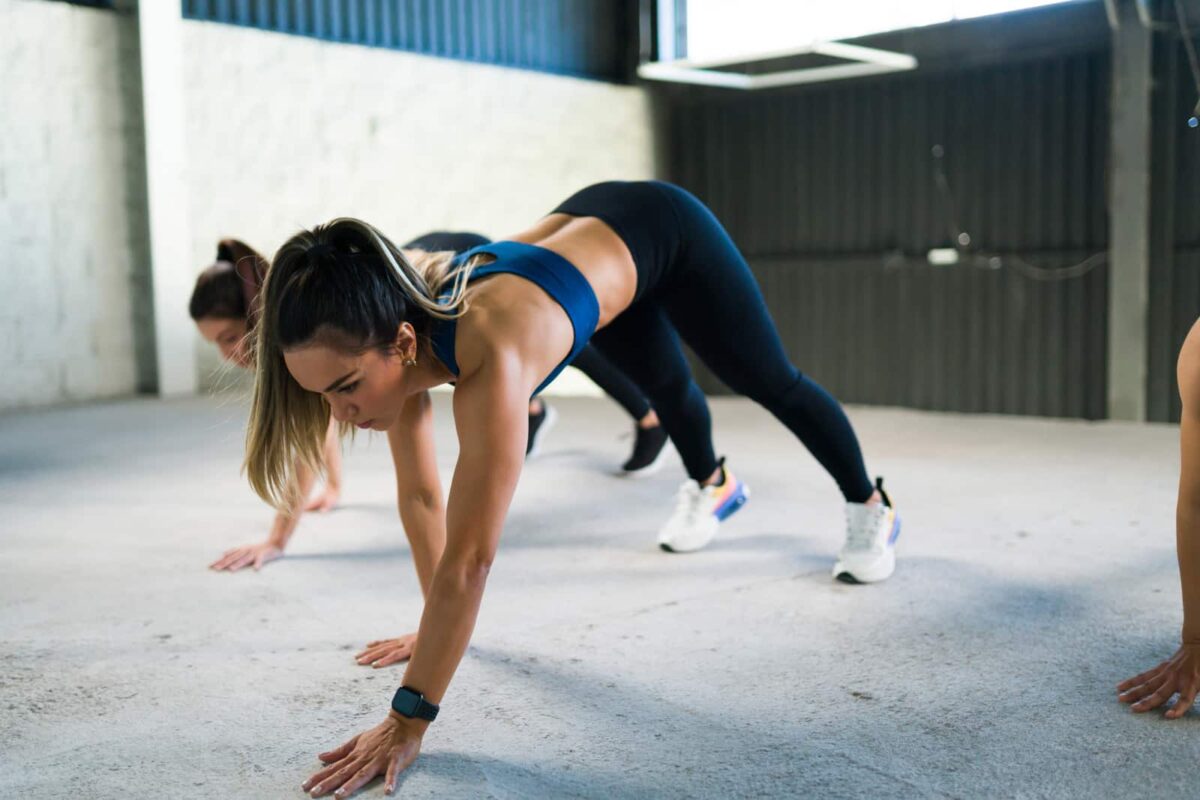Beneath the glamorous before-and-after photos, the heart-pounding beats of workout tracks, and the impressive testimonials lies a narrative that’s less frequently shared. The core of this narrative is simple yet crucial: HIIT, with its myriad of advantages, is not a universal panacea for all fitness enthusiasts. While it can work wonders for some, its intense nature might not suit everyone’s fitness journey or health profile.
Our modern age, fueled by instant gratifications and speedy results, naturally gravitates towards quick fixes. HIIT, in many ways, offers just that in the realm of physical fitness. However, as with anything that promises swift outcomes, it’s imperative to peel back the layers, understanding both its brilliance and its potential caveats.
Jump to:
- The Science Behind HIIT: Understanding the Mechanics and Impact
- Who Should Think Twice Before Doing HIIT: Understanding the Caveats
- The Physical Drawbacks of Constant HIIT: Understanding the Potential Pitfalls
- The Psychological Impact of HIIT: Navigating the Mind-Body Connection
- Why Some People Need a More Balanced Approach: Beyond the Intensity Hype
- HIIT Alternatives and Complementary Exercises: Broadening the Fitness Horizon
The Science Behind HIIT: Understanding the Mechanics and Impact

The Essence of HIIT:
Intensity and Interval At its core, HIIT stands as a stark contrast to traditional endurance-based workouts. Instead of long, sustained periods of exercise, HIIT demands short, intense bursts of exertion followed by brief rest intervals. Picture a sprinter dashing with all their might for 30 seconds, then walking or resting for another 30 seconds before gearing up for the next burst. These cycles of all-out effort and rest are the defining hallmarks of HIIT, pushing the body’s boundaries in condensed periods.
The Physiological Cascade:
Metabolism, Oxygen, and Muscles When someone engages in a HIIT session, they’re not just working on the surface; there’s a symphony of complex biological responses happening inside. Firstly, the metabolic rate gets a significant boost. This elevated metabolism, often referred to as the afterburn effect or excess post-exercise oxygen consumption (EPOC), means the body continues to burn calories at a higher rate even post-workout. This phenomenon is due to the body’s need to restore its pre-exercise state, which requires energy.
Oxygen consumption gets supercharged during a HIIT workout. As you demand more from your body, your muscles require more oxygen, leading to rapid and deep breaths. This elevated oxygen intake doesn’t just stop when the workout ends; it remains high for a while, aiding in the previously mentioned EPOC.
Lastly, HIIT places a substantial amount of stress on the muscles. As they are repeatedly called to perform at peak levels, tiny microtears form. Though this might sound alarming, these microtears are natural and vital for muscle growth. When the body repairs these tears, muscles grow stronger and, often, larger.
The Tangible Benefits
Beyond Just Aesthetics While the aesthetic allure of HIIT—leaner bodies, toned muscles, reduced fat—is undeniable, its benefits transcend the superficial. One of the most prominent benefits is enhanced cardiovascular health. By repeatedly pushing the heart into its higher rate zones, it becomes stronger and more efficient, reducing risks associated with heart diseases.
Furthermore, HIIT has proven to be a formidable foe against stubborn fat. Its ability to elevate the metabolic rate means the body can burn more calories in less time compared to moderate, steady-state exercises. And, while the primary mode of HIIT is cardiovascular, the intense nature of its exercises often recruits multiple muscle groups, promoting muscle growth and strength. This combined fat-burning and muscle-building effect often leads to more defined physiques, which explains its popularity among those aiming for body transformations.
Who Should Think Twice Before Doing HIIT: Understanding the Caveats

The Uninitiated and the Unconditioned:
Beware the Leap The seductive appeal of rapid results can draw many beginners or those out of shape directly into the throes of HIIT. However, this can be akin to diving into the deep end before learning to swim. Without a foundational level of fitness, beginners risk overstressing their heart, muscles, and joints. The body, unaccustomed to such levels of exertion, can become prone to strains, sprains, or even more severe injuries. The initial phase of one’s fitness journey should ideally involve building stamina, flexibility, and basic muscle strength before embarking on advanced regimes like HIIT.
Medical Conditions:
Caution Over Courage While ambition and determination are commendable, they should not overshadow the importance of health precautions. Individuals with underlying medical conditions, particularly heart problems, high blood pressure, or joint issues, should be especially cautious. The high-intensity nature of HIIT can exacerbate these conditions. For instance, the rapid spike in heart rate might not be advisable for someone with cardiac issues. Similarly, the high-impact movements often associated with HIIT could aggravate joint problems, making conditions like arthritis potentially more painful.
Older Adults:
Age, Wisdom, and Prudence Age brings with it experience, wisdom, and, unfortunately, often a few physical limitations. As our bodies age, recovery time elongates, muscles weaken, and joints become less flexible. Older adults contemplating HIIT should be aware of these physiological changes. While many seniors can and do safely participate in HIIT, individual considerations are paramount. A modified version of HIIT, tailored to suit their fitness level and physical condition, might be more appropriate than the generic routines often showcased in mainstream fitness channels.
Past Injuries:
The Echoes of Ailments Past A history of injuries can cast a long shadow, especially in the realm of high-intensity workouts. Past injuries, even if healed, can sometimes create weak links in the body’s biomechanics. Engaging in intense workouts like HIIT might re-aggravate these weak points, leading to reinjury or creating new problem areas due to compensatory movement patterns. If you’ve had injuries in the past, especially recurrent ones or those that took extensive rehabilitation, a thorough assessment and a consultation with a healthcare or fitness professional is vital before beginning HIIT.
The Physical Drawbacks of Constant HIIT: Understanding the Potential Pitfalls

Looming Injuries:
The Price of Intensity Consistent participation in high-intensity workouts, without appropriate rest and recovery, can substantially increase the risk of injuries. The explosive, high-impact nature of many HIIT exercises places significant stress on muscles, tendons, and joints. When done repeatedly without allowing the body adequate recovery time, it might lead to conditions like tendinitis, muscle strains, or even stress fractures. Furthermore, the high-paced nature of HIIT often means there’s less focus on form, and incorrect form over time can exacerbate injury risk.
The Perils of Overtraining:
Listening to Your Body’s SOS One of the less discussed, yet highly prevalent, drawbacks of regular intense workouts is overtraining syndrome. While regular exercise boosts energy, paradoxically, overtraining can lead to chronic fatigue. Athletes often find their performance plateauing or even declining, despite putting in more effort. Furthermore, an overtrained body might struggle with sleep disturbances – either insomnia or feeling excessively tired but unable to sleep soundly. These symptoms are the body’s way of signalling that it’s not getting the recovery it desperately needs.
A Hormonal Tug of War:
The Stress Connection Engaging the body in constant physical stress, as with relentless HIIT, can trigger hormonal imbalances. Specifically, the body might produce excessive amounts of cortisol – commonly known as the stress hormone. While cortisol is crucial for various functions, including regulating metabolism and reducing inflammation, chronically elevated levels can be problematic. High cortisol can impede recovery, increase fat storage, and even weaken the immune system. Furthermore, it plays a role in mood regulation, and imbalances can lead to feelings of anxiety or depression.
Mental Health:
The Overlooked Victim Physical health and mental well-being are intrinsically linked. While HIIT can provide endorphin-fueled highs post-workout, its constant, intense demands can also lead to burnout. The pressure to always perform at peak, to constantly push limits, can induce anxiety in some individuals. This can stem from either the fear of underperforming or the simple exhaustion of constantly being in the ‘high-intensity’ mode, even mentally. It’s crucial to recognize that taking breaks is not just beneficial, but essential for holistic health.

The Social Media Stranglehold:
Racing Against the Digital Tide In our digital age, fitness isn’t just a personal pursuit; it’s often a performance staged for virtual audiences. Social media is inundated with influencers showcasing their HIIT routines, often accompanied by awe-inspiring transformations and feats of endurance. While these can be motivational for some, they also inadvertently set a high bar for what HIIT “should” look like. This creates a silent pressure to not just participate in HIIT but to excel in it – to always be faster, stronger, and seemingly unfazed. The constant barrage of these “perfect” workouts can lead to unrealistic expectations, making individuals push themselves dangerously hard to mirror what they see online, often at the expense of their well-being.
The Shadows of Inadequacy:
The Silent Struggle of the Many Not everyone can keep pace with the blistering intensity of a typical HIIT session, especially when just starting out. But in group settings or when following along with online classes, falling behind or needing more breaks can foster feelings of inadequacy. When the majority seems to be breezing through, those who struggle might question their fitness, dedication, or even self-worth. Over time, this can cultivate a negative self-image, making individuals dread workouts or, worse, avoid them altogether.
Obsession over Recreation:
The Double-Edged Sword of Dedication While dedication is admirable, there’s a thin line between commitment and obsession. The potent results HIIT can deliver, combined with the aforementioned pressures, can push some individuals towards an unhealthy relationship with exercise. Instead of being an avenue for health and enjoyment, workouts become a punishing ritual or a compulsion. Rest days, essential for recovery and growth, might be skipped out of fear of “losing progress” or “falling behind.” This not only jeopardizes physical health but can also lead to burnout, increased stress, and an overall diminished enjoyment of life.
Why Some People Need a More Balanced Approach: Beyond the Intensity Hype

The Underestimated Power of Low and Moderate-Intensity Workouts:
In the whirlwind of HIIT’s popularity, it’s easy to overlook the age-old virtues of low and moderate-intensity workouts. These workouts, often branded as less effective in the face of high-intensity regimes, offer unique benefits. Activities like brisk walking, cycling, or steady-state jogging improve cardiovascular health, boost mood, and can be therapeutic. They allow for prolonged fat burning and provide opportunities to enjoy the workout process without the daunting pressure of keeping pace with a timer. For many, especially those with certain health conditions, these gentler workouts are not just beneficial but essential.
Rest, Recuperate, and Rise:
The Imperative of Recovery Any seasoned athlete will testify: progress isn’t just made in the gym or during a workout; it’s also made during recovery. Muscles grow and strengthen during their repair phase, which only occurs during rest. Recovery days are vital to prevent overtraining, reduce the risk of injuries, and allow the body to heal and come back stronger. Listening to one’s body—acknowledging aches, pains, or persistent fatigue—is a skill every fitness enthusiast needs to cultivate. It’s a reminder that pushing through isn’t always bravery; sometimes, the bravest act is to step back and allow oneself to heal.
A Melange of Movements:
The Spice of Fitness Life While HIIT can be a potent component of a fitness routine, it shouldn’t overshadow other valuable exercise forms. Incorporating a mix of strength training, flexibility exercises, and varied cardio can lead to a more holistic approach to health.
Strength training, whether through free weights, resistance bands, or body weight, builds muscle mass, improves bone density, and aids in maintaining a healthy metabolism. Flexibility exercises, like yoga or Pilates, enhance joint health, improve posture, and can significantly reduce the risk of injuries. Traditional cardio workouts, like long-distance running or swimming, promote heart health and endurance. Together, these varied exercises ensure that the body is not just strong but also agile, resilient, and efficient.
HIIT Alternatives and Complementary Exercises: Broadening the Fitness Horizon

LISS (Low-Intensity Steady-State Cardio):
The Unsung Hero of Cardio Workouts Often overshadowed by its high-intensity counterpart, LISS stands as a testament to the adage, “slow and steady wins the race.” LISS involves performing cardio exercises at a consistent, steady effort for an extended period, typically for 30 minutes to an hour. Some of its core benefits include enhanced fat burning, improved cardiovascular health, and being generally gentler on the joints and muscles. Examples include brisk walking, slow jogging, cycling, or even swimming. For those new to exercise or recovering from an injury, LISS can serve as an excellent entry point or a recuperative routine.
Strength Training:
The Building Blocks of Fitness While HIIT often incorporates strength elements, dedicated strength training sessions offer distinct advantages. They focus on gradually building muscle mass, enhancing metabolism, and improving overall body strength and structure. By using resistance—whether from weights, resistance bands, or body weight—individuals can target specific muscle groups, ensuring balanced muscle development. This foundational strength not only aids in daily functional tasks but also acts as a protective shield against injuries.
Mind-Body Practices:
The Union of Physical and Mental Wellness Yoga and Pilates have emerged as global fitness trends, not just for their physical benefits but also for their emphasis on mental wellness. Both practices enhance flexibility, balance, and muscle tone. They promote joint health, improve posture, and can play a crucial role in injury prevention. Beyond the physical, they emphasize mindfulness, breathing techniques, and mental focus. In an era where mental stress is ubiquitous, these practices provide a sanctuary, ensuring that our fitness journey nourishes the mind as much as it does the body.
The Art of Combination:
Merging HIIT with Other Modalities While HIIT is potent, its efficacy can be magnified when combined with other exercise forms. For instance, coupling HIIT with strength training can yield faster muscle-building results and enhanced fat loss. Interspersing intense HIIT days with LISS can ensure the body gets a breather, reducing the risk of overtraining. Incorporating yoga or Pilates post-HIIT can aid in active recovery, muscle elongation, and mental relaxation. In essence, a diverse fitness regimen that marries HIIT with its complementary counterparts ensures a holistic, balanced, and sustainable approach to health.
To conclude, while HIIT stands tall in the fitness landscape, it’s merely a single piece in the intricate puzzle of holistic health. By integrating various exercise modalities, one ensures a comprehensive approach to fitness—one that embraces strength, endurance, flexibility, and mental well-being.














